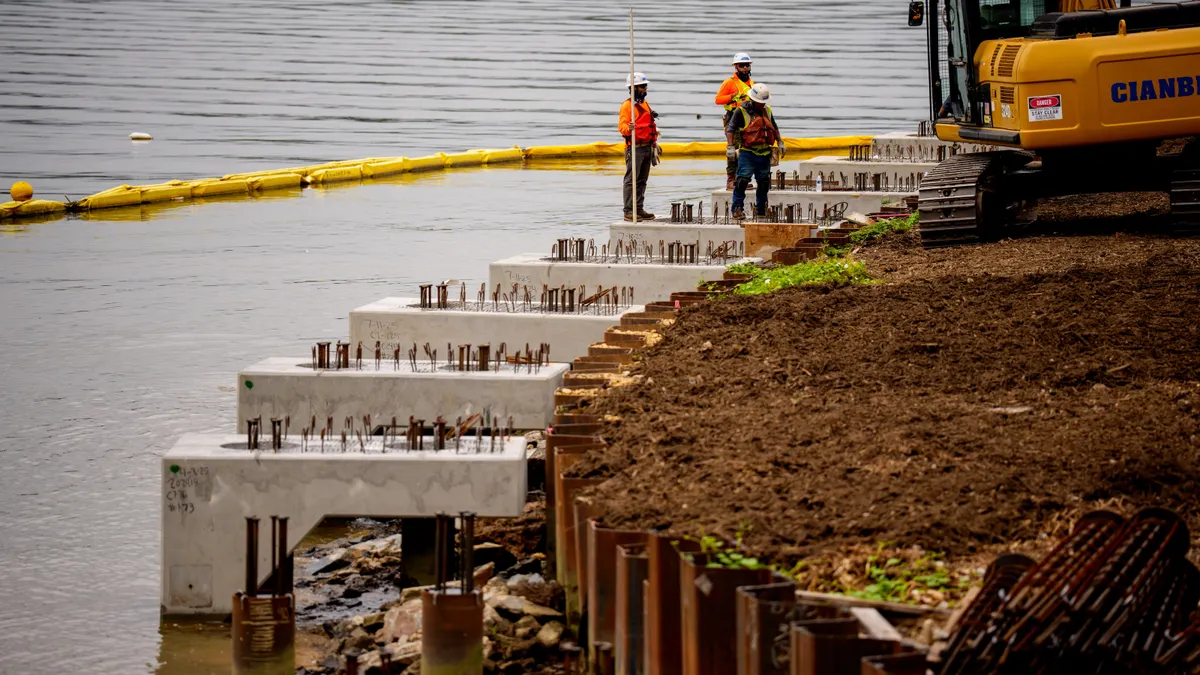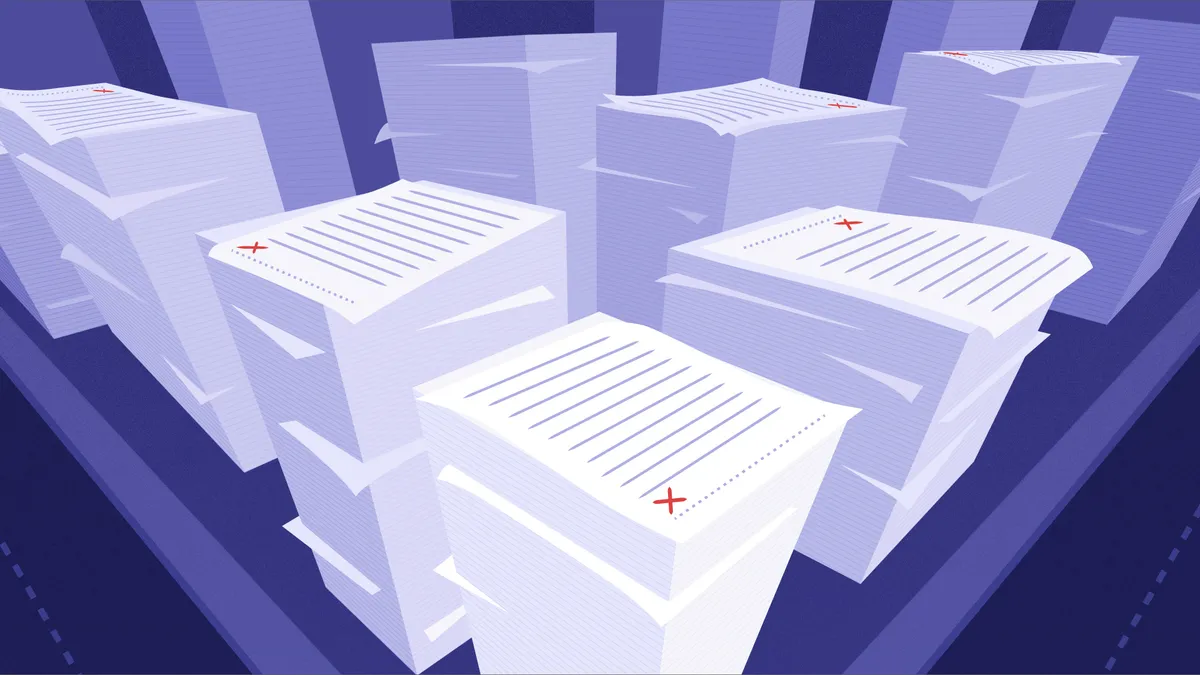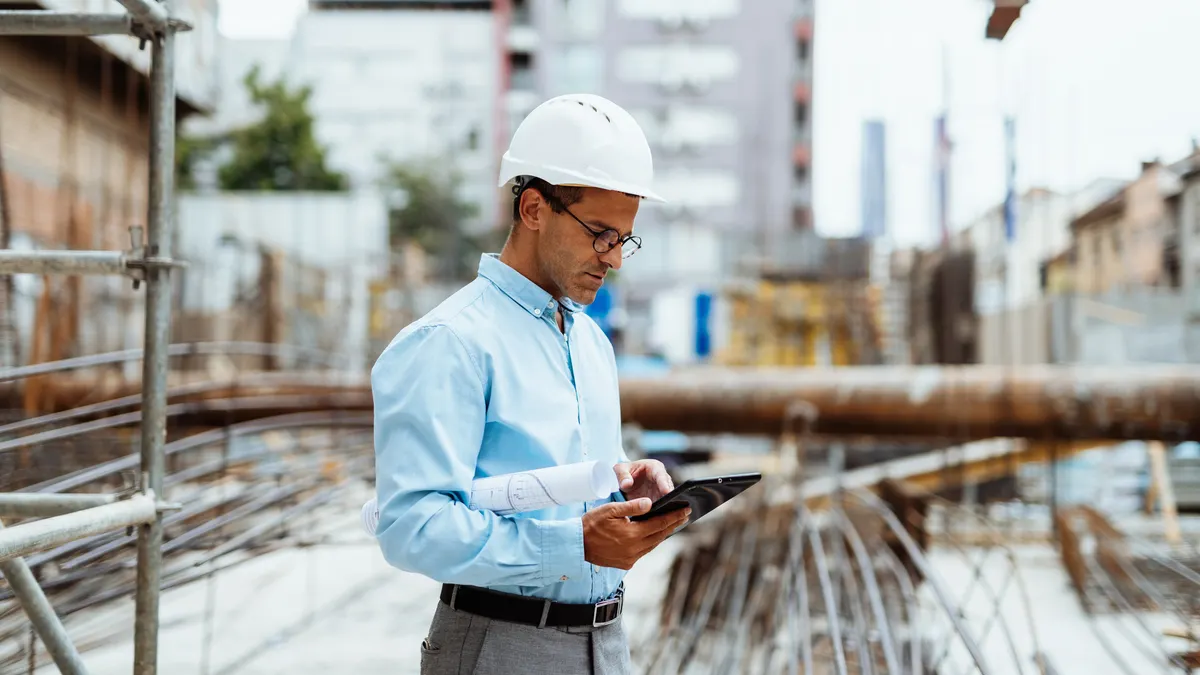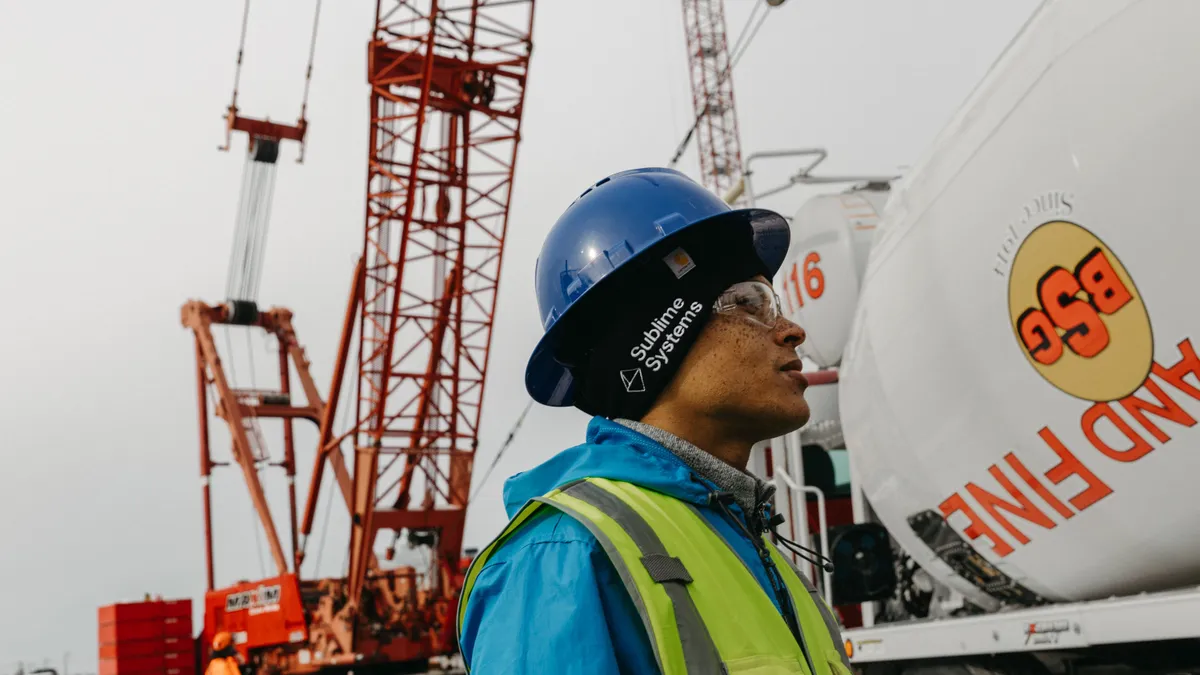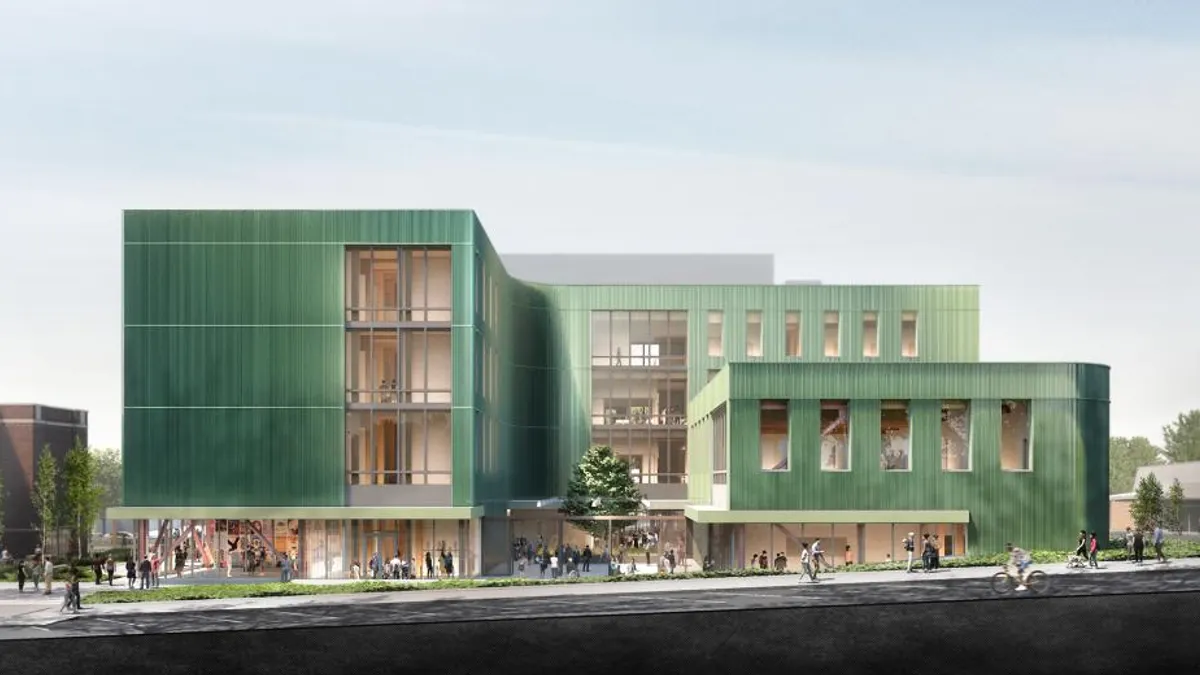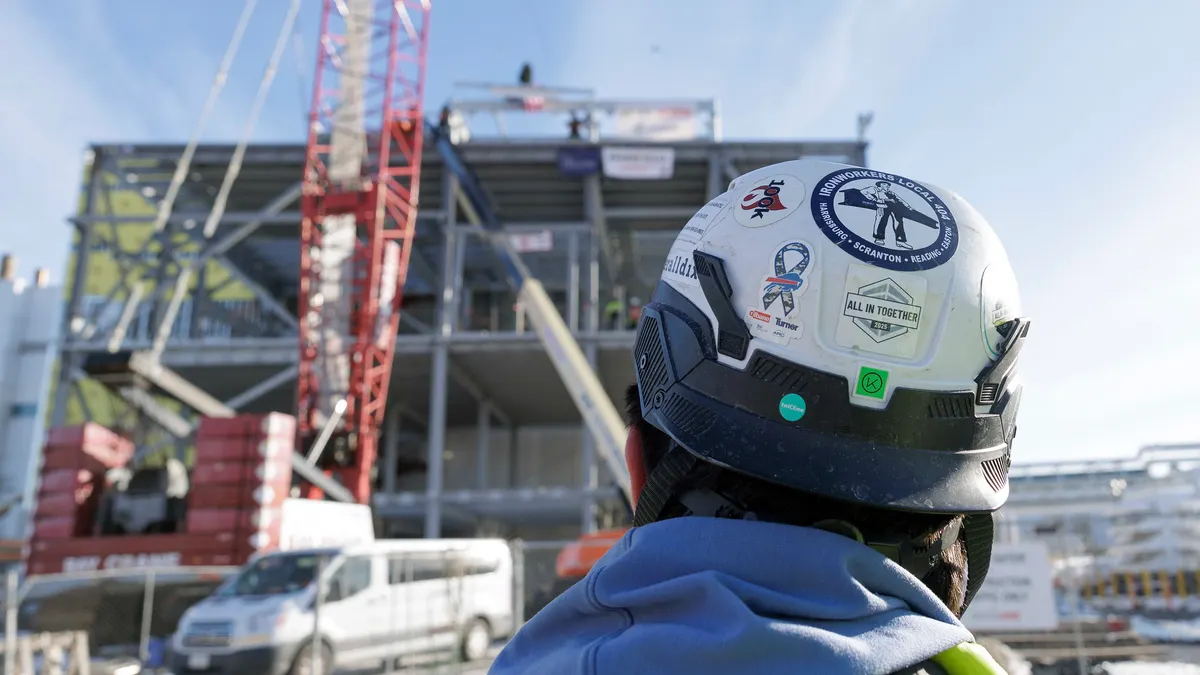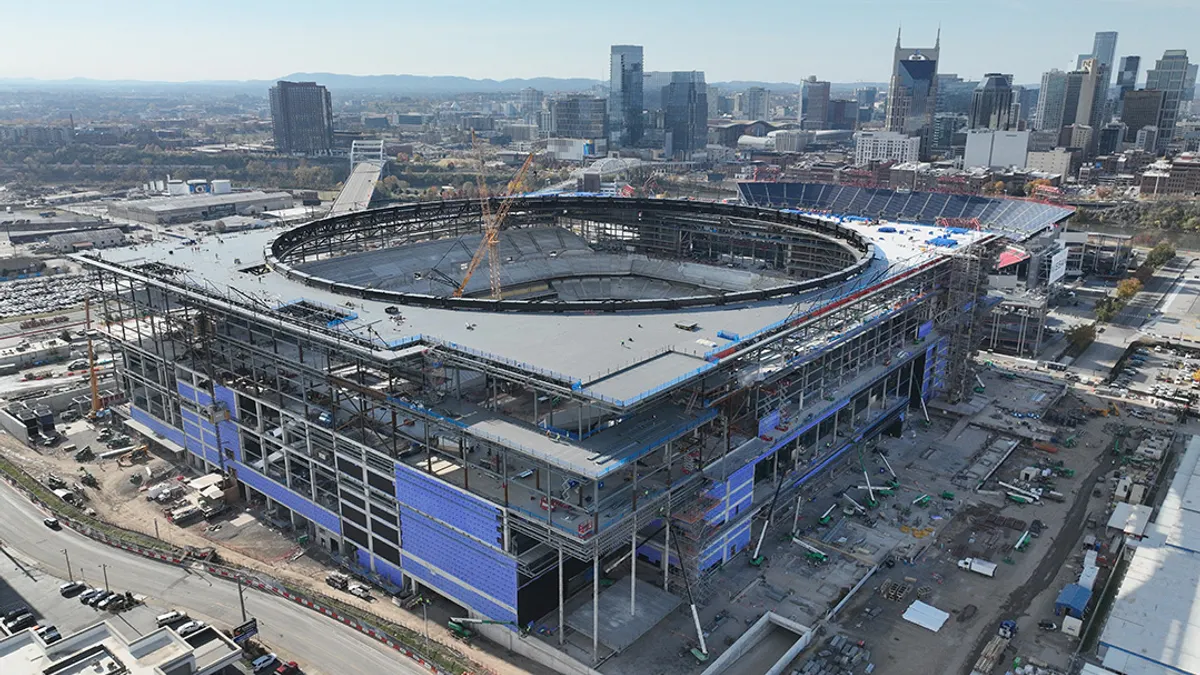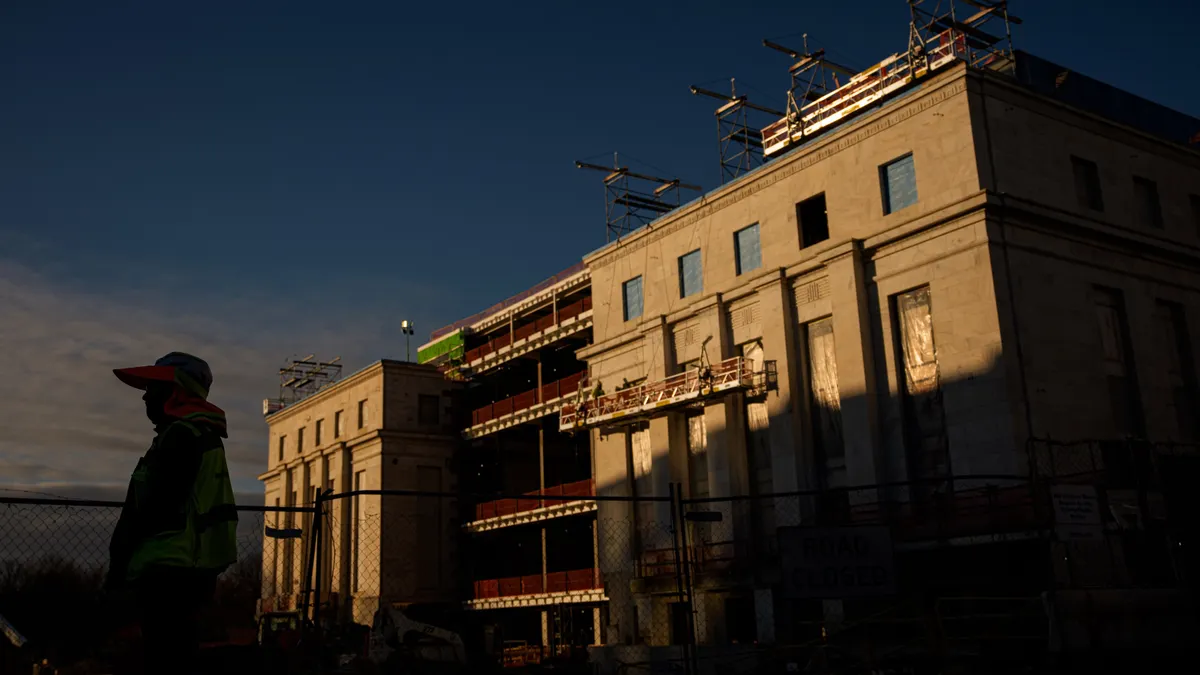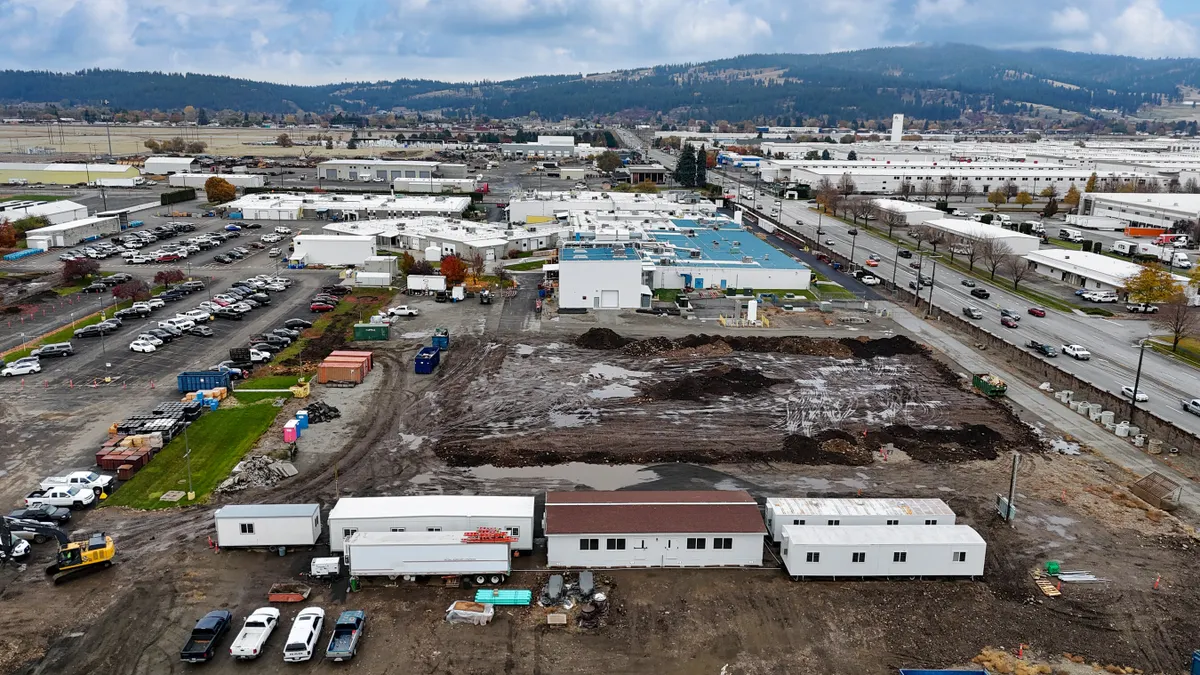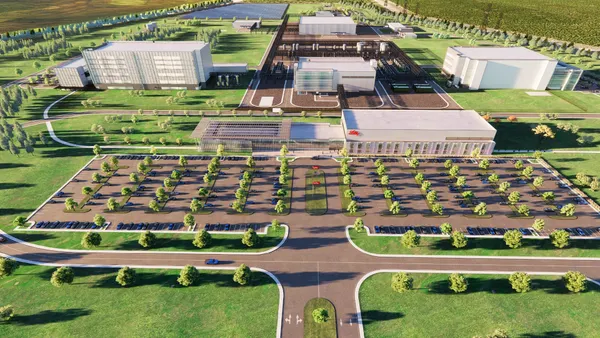Five months after President Donald Trump’s Liberation Day on April 2, nearly every project that breaks ground carries a higher price tag.
Steel, aluminum, copper and a host of other inputs today carry hefty import duties as a result of the president’s policies. The price increases have vastly slowed construction spending across the country.
Tariffs now sit firmly in the construction economy as more than just a temporary political experiment. They’re impacting jobs both underway and those still in planning.
Although a recent appeals court ruling could knock some down, tariffs on steel, aluminum and copper are unaffected by the decision.
Amid that backdrop, two views of the levies have coalesced for contractors and construction economists: one where tariffs help build domestic economic momentum, and hence spur more construction, and another where they simply add to building costs.
In that light, the real debate for construction executives in 2025’s second half is not whether tariffs are good or bad. It’s whether there’s a balance point where tariffs, while adding costs in the short term, can ultimately deliver long-term resilience for domestic builders and reverse the decline of manufacturing in the U.S., said Jay Bowman, partner at FMI, a Raleigh, North Carolina-based consulting firm.
“Think of the negative aspects of 90 years of potentially low tariffs, the loss of domestic manufacturing and with that, the removal of vocational education in our schools,” said Bowman. “The major challenge that has really impacted the design and construction industry over the last 50 years has been a shortage of skilled labor.”
Tariff’s balancing act
Bowman said tariffs should be understood as part of a balancing act. Too low, and the U.S. remains fragile and overexposed to global shocks. Too high, and costs spiral out of control, putting projects on hold.
But that balancing act will only work if tariffs are predictable and sustained, said Michael O’Reilly, vice president at Rider Levett Bucknall, a construction consultancy firm. Without stability, contractors will hesitate to commit resources toward production.
“Tariffs can play a part in reshoring and boosting domestic manufacturing, but it depends on long-term consistency to be effective,” O’Reilly told Construction Dive.
And some economists doubt tariffs can provide that balance at all. Ken Simonson, chief economist at the Associated General Contractors of America, argued the decline of U.S. manufacturing stemmed more from global cost dynamics than tariff policy.

“U.S. manufacturing shrank mainly because European and Asian countries had lower labor costs and, in some cases, better access to raw or processed materials,” Simonson told Construction Dive. “Low tariffs were a minor contributor and high tariffs will not be sufficient to bring back much manufacturing now, especially if firms can’t count on the tariffs lasting, access to inputs or sufficient skilled labor.”
Another wrinkle in the debate centers around labor. Though tariffs may alter the competitiveness of foreign goods, they clash with workforce shortage realities. There is simply not enough available labor to grow the nation’s infrastructure while diverting laborers to tasks previously performed abroad, often at lower costs, said Michael Guckes, chief economist at Cincinnati-based ConstructConnect.
“Low tariffs did not hollow out America’s domestic manufacturing as much as they slowed the pace of its decline,” Guckes told Construction Dive. “Additionally, we cannot ignore the fact that today’s vocational training pipeline is as small as it is because too many young people were pushed into college programs.”
From that perspective, the real culprit of the skilled labor shortage has been the U.S. education system’s all-or-nothing push for high school graduates to obtain a university degree. Guckes added that tariffs also rely on executive action, not legislation, which makes them politically fragile.
“Today’s tariffs are a result of executive branch efforts, which, without codification into law by Congress, could be quickly nullified by the next presidential administration as soon as 2029,” Guckes told Construction Dive. “This reality leaves a cloud over profitable domestic production investments which could quickly turn into failed ventures without long-term tariff support.”
From a policy standpoint, Guckes said the balancing point is closer to zero tariffs. Broad trade barriers raise costs across the board but create little new opportunities for construction, he said.

“Any tariffs now would only put additional pressure on costs, further reducing returns on investment and hence construction output,” Guckes told Construction Dive. “It is difficult to posit that there is some ideal tariff level that would improve the industry overall.”
A post-war shift
Others say the U.S.’s deindustrialization was bound to occur regardless of policy. Anirban Basu, chief economist at Associated Builders and Contractors, said after World War II, U.S. factories dominated because much of the world was in ruins. As Europe and Asia industrialized, he argues, the U.S. was bound to lose share.
“Significant loss in U.S. manufacturing capacity over the course of decades was inevitable, with or without tariffs,” Basu told Construction Dive. “As more nations industrialized, including China, India, South Korea, Brazil, Mexico and many others, more nations were able to supply themselves. It is conceivable that harsh regulations, unionization and poor management also played a part in accelerating the deindustrialization of America.”
However, Basu acknowledged a small window of opportunity the Trump administration’s tariffs could create. He said they could serve as a form of negotiation with other nations, which could, in turn, be a net positive for construction activity here.
“Perhaps these high tariffs serve as a means to induce other nations to lower their barriers against U.S. exports,” said Basu. “If our barriers and their barriers to trade collapse while America makes the right investments, there will be substantial augmentation of U.S. manufacturing.”
That would lead to more industrial work in the United States, said Basu. As more of the supply chain onshores, the U.S. would become home to more intermediate goods manufacturers.
“For decades, many manufacturers relocated to China and other nations because their suppliers had moved there,” Basu told Construction Dive. “But with the supply chain filling in over time, the magnetic appeal of offshoring is diminishing, and that means more industrial construction in the United States during the decades ahead.”
At the same time, Basu is skeptical of blanket tariffs, which he likened to taxes that create inefficiencies.

“The higher the tariff, the greater the loss of efficiency. America prospered when tariffs were low,” said Basu. “Perhaps the optimal outcome would be targeted tariffs in areas deemed central to national security, but low tariffs on virtually all other goods.”
Simonson, on the other hand, said protective policies rarely produce broad benefits.
“Measures that raise costs, such as tariffs, quotas and unnecessarily strict regulations, are net losers for the economy,” he told Construction Dive. “Protected firms may expand capacity but usually raise prices and work to keep barriers in place. Far more businesses and consumers pay more or are left with less desirable choices than win from more profits and jobs.”
Accept and adapt
Despite their differences, construction industry professionals agree on two points. First, tariffs raise input costs in the short term. Second, as they embark on their second-half 2025 plans, contractors have already been adapting.
Indeed, the mid-year market reports from three general contractors show this change in action already.
Both Skanska and DPR indicated shifts in sourcing strategy, according to the general contractors’ latest construction market reports. Meanwhile, Gilbane projected just 1% overall growth in 2025 construction spending, down from 6.5% in 2024.
Pivoting to more diverse sourcing methods entails early procurement packages and allowances to spread risk between owners and subcontractors. That approach has been en vogue since the early days of the COVID-19 pandemic and some contractors may even stockpile small, import-dependent goods such as tools or fasteners, said Guckes.
Despite those strategies, contractors may find themselves with little leverage against tariffs in the long term, said Simonson. He noted “the power lies with owners,” as owners ultimately decide whether to accept price adjustments.
Sector specific
Sector exposure also plays a role.
Bowman and Basu both noted deep-pocketed players in data centers and infrastructure can better absorb tariff-induced cost increases.
O’Reilly added, in addition to those sectors, some publicly funded segments such as education and healthcare construction are favorably positioned to mitigate increased levies. Road, bridge, water and waste work also present construction opportunities, according to Gilbane’s third quarter market conditions report.
But other private sector projects, such as office or multifamily, are more likely to stall.
“Data centers are probably best able to adapt to tariff costs,” Simonson told Construction Dive. “The cost of tariffs is trivial compared to the revenue a new center can generate.”



